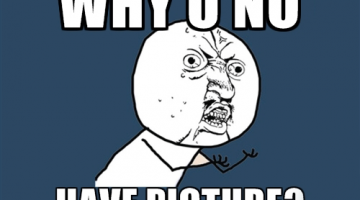What if you could walk inside the Kickstarter website? Well, you’d probably have something pretty close to our collaboration with the MoMA Design store. It’s a window display designed to recreate the Kickstarter online experience for the real world, and it features a number of notable Kickstarter design projects. It’s kind of like climbing inside your computer.
We spoke to Kickstarter designer Alex Proba about what it was like to put the installation together from start to finish.
Basically, at the beginning when we started doing it, we were like, “What should the concept be?” It’s Kickstarter and MoMA, but is it just about Kickstarter? No. I tried to see who we are and what we do. How can we make a platform offline that showcases the creators? Yancey [Strickler, Kickstarter CEO] was like, “I always wanted to have a physical website.” For me, that was a good starting point. It’s so analogue and cute that it’s kind of awesome. I started designing and drawing up the first presentation. I started with the phrase “Everyone is capable of making incredible things.”
I was looking through different window installations, and got curious about motion. I thought maybe it as something we could do in an analog way. It was also a good time to introduce the new [shade of green] for Kickstarter, which we changed the week before the install. It was a cool experiment to see if the colors actually worked in real life—same with the patterns and textures. We started to do those a lot this year. At the Art Book Fair we had a [marble] notebook pattern. We were thinking about materials that were nice and approachable, like painted wood and cardboard and all these things. I just kept looking at the project page and was like, “Okay, what’s important here? The backers.” The money is actually not important, but the title is very important. I just kept thinking, how can you transform the Kickstarter page to real life? [We pulled up] an image of Walt Disney standing next to a carousel.
To get the idea rolling and get the CAD drawing done, I had to come up with sizing. I went to the store and measured everything they had from mockups, then I made a CAD layout for both [MoMA Design] stores. I had to find a company that did window displays. There was no way to produce the spinning carousel and have someone else produce the browser replica because it all has to fit together.
A lot of designers, the first thing you do is draw on paper to get the idea down. We thought of a pattern, then I made all these files of how big the carousel was, how it was installed with the motor, how it attached to the walls. I contacted a group called Guild; they are in Gowanus and have a 40-thousand-square-foot shop with everything—production, technology department, printing department, everything. I emailed them and they were up for it. I shared my stuff with them, and they were like, “Yeah, no problem. That’s easy to do.” I was like, “Oh my god, you’re saving my life.”
After that, it was me going to Guild and making sure the first prototype was right, how the quality of the wood—at one point I was working on the type, like what’s the size of the the type, the color of the text…then, two weeks later, we did a six day install of both windows. I was there the whole time helping. I was standing mostly in the street under an umbrella directing where things were going. I was there from 9 AM-8 PM every day. That was a challenge. Once the store closed we couldn’t be inside, which is why it took six days. I thought we were going to be done in two. From Guild’s side there were probably eight people, and then me and one person from MoMA. It was nonstop. I [put the project together] in a program called Sketch Up. I made it for visual purposes, for people to understand what was in my head. Guild came back and said, “Okay, here’s what it would look like.” They took my drawings and made them 3D. It’s really cool to see.
This post was originally published on this site

